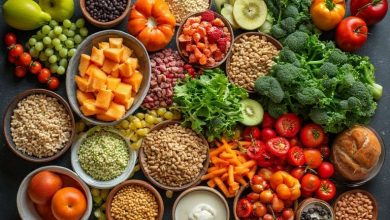

Gestational Diabetes Diet Plan: What to Eat and What to Avoid
Gestational diabetes is a type of diabetes that occurs during pregnancy, and it affects about 9.2% of pregnant women in the United States. It develops when your body can't produce enough insulin to regulate your blood sugar levels effectively. Without proper management, gestational diabetes can lead to complications for both the mother and the baby. A healthy diet is essential for managing gestational diabetes and keeping your blood sugar levels within a healthy range. In this article, we'll provide you with a gestational diabetes diet plan to help you make healthy food choices.
What is a gestational diabetes diet plan?
A gestational diabetes diet plan is a meal plan designed to help women with gestational diabetes manage their blood sugar levels and keep their weight gain within a healthy range during pregnancy. A healthy diet during pregnancy can also help ensure that your baby is born at a healthy weight.

Foods to eat
The following foods are recommended for women with gestational diabetes:
Complex carbohydrates
Complex carbohydrates are a good source of energy and can help regulate your blood sugar levels. Examples of complex carbohydrates include:
- Whole grains (brown rice, whole wheat bread, whole wheat pasta)
- Vegetables (sweet potato, corn, peas, carrots)
- Legumes (lentils, chickpeas, black beans)
Protein
Protein is essential for the growth and development of your baby. Good sources of protein include:
- Lean meats (chicken, turkey, beef)
- Fish (salmon, tuna)
- Eggs
- Dairy products (low-fat milk, yogurt, cheese)
Healthy fats
Healthy fats can help lower your cholesterol levels and reduce your risk of heart disease. Examples of healthy fats include:
- Avocado
- Nuts (almonds, walnuts, pistachios)
- Seeds (chia seeds, flaxseeds)
- Olive oil
Fruits
Fruits are a good source of vitamins, minerals, and fiber. However, it's important to limit your intake of fruits to prevent spikes in your blood sugar levels. Examples of fruits that are low in sugar include:
- Berries (strawberries, raspberries, blackberries)
- Citrus fruits (oranges, grapefruits)
Vegetables

Vegetables are packed with nutrients and fiber, which can help regulate your blood sugar levels. Examples of vegetables that are low in carbohydrates include:
- Leafy greens (spinach, kale, arugula)
- Cruciferous vegetables (broccoli, cauliflower)
- Cucumber
- Bell peppers
Foods to avoid
The following foods should be avoided or limited as they can cause spikes in blood sugar levels:
- Simple carbohydrates (white bread, white rice, sugary drinks)
- Processed foods (chips, cookies, candy)
- High-fat foods (fried foods, full-fat dairy products)
- Fruit juice

Sample meal plan
Here's a sample meal plan for women with gestational diabetes:
- Breakfast: Whole-grain toast with avocado and egg, plus a cup of low-fat milk
- Snack: Apple slices with almond butter
- Lunch: Grilled chicken breast with roasted vegetables and brown rice
- Snack: Greek yogurt with berries
- Dinner: Baked salmon with steamed broccoli and quinoa
- Snack: Carrot sticks with hummus

Conclusion
Gestational diabetes is a condition that requires careful management of blood sugar levels to ensure a healthy pregnancy and baby. A healthy diet is a crucial part of this management, and incorporating foods high in fiber, protein, and healthy fats while limiting processed and sugary foods can make a big difference. It is important to work closely with a healthcare provider and a registered dietitian to develop a personalized gestational diabetes diet plan that works for you and your individual needs. With proper management, gestational diabetes can be successfully managed, allowing for a healthy pregnancy and baby.


